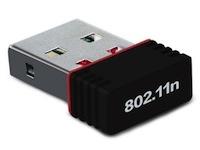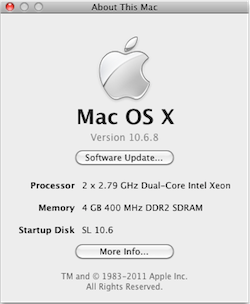-
Posts
10068 -
Joined
-
Last visited
-
Days Won
569
Content Type
Profiles
Articles, News and Tips
Forums
Everything posted by Hervé
-
Please post your specs as obtained through Terminal command lspci -nn.
-
i5/i7 CPUs aren't usually an issue because these are used in real Macs. Core2Quad however were never fitted to real Macs so there is always a margin for doubts. But I'm sure you'll be able to find something in the community in relation to the suitability of that Q9550 CPU.
-

Retail Apple 10.7 USB -> install w/o a Mac, possible?
Hervé replied to osxuser's topic in The Archive
Well, that's Hackintoshing. If it was meant and known to be easy, none of this big community would exist, would it? -

Retail Apple 10.7 USB -> install w/o a Mac, possible?
Hervé replied to osxuser's topic in The Archive
Mm, if you force restarted the D630 after installing EDP but before doing the build, it's going to be complicated. Start again from scratch, but this time, create 2 partitions on your HDD: a 1st one that you will call "SL_final" of say 20Go to 50Go + a 2nd one that you will call ModCD (both formatted OS X Journaled on GUID partitioned HDD). Install SL with ModCD on that "ModCD" partition and once you're back in business, get back to me by PM. -
Mmm, can't say I've ever experienced that on my D630n.
-

Retail Apple 10.7 USB -> install w/o a Mac, possible?
Hervé replied to osxuser's topic in The Archive
You may experience Black Screen on 1st boot/reboot. Don't panic, there are solutions... -

Help with OSX Dell D630 Installation - ACPI Issues
Hervé replied to theampbuilder's topic in The Archive
I'd say you have no existing Mac or Hack to create your OS X installer and you would be using a distro, right? There's always the virtual machine route, but it's often problematic. Why don't you follow what was just suggested to 'osxuser' in today's other thread on the same matter? He succeeded... -
Added Lafalink LF-D10 & LF-D12 150Mbps Nano wireless USB adapters. NB: some confusion on the Internet for these 2 models. Lafalink web site makes no reference to LF-D12 model, only to LF-D10 with MT7601 chip. However, commercial sites do list LF-D10 with RT5370 chip and LF-D12 with MT7601 chip. I have both models but they cannot be physically distinguished as there are no indications on the adapters...
-
Xeon really are server/workstation CPUs, so your motherboard is unlikely to support it (BIOS). However, if your BIOS does support Core2Duo Quad, go for that. Look up on the Net for OS X installation on quad-core CPU; I known that many people reported issues booting the OS, but I did not spend much time on it and I don't own one... Lookup the specs of your motherboard, they should list the supported families of CPUs. Your envisaged jump from your current dual-core E7400 2.8GHz FSB1066 to top of the range quad-core Q9550 2.83GHz FSB1333 is quite a significant upgrade in itself. For 3D rendering, I'm sure it would make quite a difference.
-

Retail Apple 10.7 USB -> install w/o a Mac, possible?
Hervé replied to osxuser's topic in The Archive
I'm pretty sure you had the latest ModCD version 1st time and it works Ok. I used it myself to 1st install SL with my DVD all those years ago on my D630 X3100 HiRes. If you managed to get to the installer, this kind of error message usually happens if you proceed with installation without re-partitioning the HDD as GUID (GPT) and formatting the partition Mac OS X (Journaled). That is key to complete installation. Make sure you do not skip or forget that Disk Utility phase before you proceed with actual installation. -
A graphics-related bug that would keep the fan spinning?
-
The best is to use the Chameleon wizard. Download it off the web.
-

Help with OSX Dell D630 Installation - ACPI Issues
Hervé replied to theampbuilder's topic in The Archive
It seems you would be missing the AppleACPIPlatform kext. Can you check what you have in your Bootpack or /Extra folder? These are myHack installations with the correct D630 bootpacks and done according to the process detailed in EDP pages of the web site, right? -

Retail Apple 10.7 USB -> install w/o a Mac, possible?
Hervé replied to osxuser's topic in The Archive
Maybe it's not the retail DVD but a recovery DVD from a Mac and those don't work, they're missing key installation files. Only the retail disks will do. -
There's no risk in doing a disk verification/repair through Disk Utility. You can't boot anyway. By the way, you can boot off the myHack USB installer, then interrupt the Chameleon bootstrap and switch to your HDD SL partition to try and load it. That's one way to boot OS X when the HDD bootloader is missing or is damaged. It does not seem to be the case at all here, but it could be something worth trying in case the issue comes from say an older version of Chameleon...
-
You would normally expect stuff like Network drivers, DSMOS, etc after that. If you're getting stuck on a disk verification, maybe you ought to get it checked out. If you can, try and boot off a myHack USB installer, get to the main installation screen and go to Disk Utility to perform a HDD check and possible repair. It's not good that you can't even boot in safe mode. I also notice your D620 is reporting issues with VoodooPState. Any idea why? I attach a copy of a kernel log, having booted ML on my D620 GMA950. D620_kernel_log.rtf
-
If your D620 SL partition boots with Chameleon, manually enter -v flag to try and see where boot process stops/hangs. You could also try to boot in single user mode with -s flag and once in there, proceed with a myFix repair with myfix -qt / command from the # prompt. This assumes you have myHack installed on your troubled SL partition. If it's not the case, the same process could be attempted from a myHack USB installer loaded to the main installer screen and from which Terminal app can be launched. You could probably try a complete myHack-based re-install of SL over your existing SL partition and expect to retain all your previous files and applications as long as you simply overwrite the existing partition, not reformat it. I know that works with ML for instance.
-
Sticking to mainstream Chameleon version (v2.2 r2377 at time of writing): add the following option to your Chameleon boot plist: <key>UseMemDetect</key> <string>Yes</string> add the following option to your SMBIOS plist: <key>SMoemcputype</key> <string>1026</string> CPU and RAM will then be reported properly:
-
Can you start by telling us what you are trying to install (I assume Mavericks) and how far you got? Looking at your hardware: Intel i5-3337U: Ok Intel HD4000: Ok AMD Radeon HD 7500M/7600M: may work with DSDT/kext patch, otherwise try and disable and use HD4000 only Realtek ALC262: should be Ok Realtek RTL8139/810x FastEthernet: should be Ok with driver off Realtek's web site DW1703 wireless (AR9485-based) + bluetooth : NOk, you'll have to replace that wireless card by a compatible one. Bluetooth might work though. Microdia Webcam (USB internal): should be Ok if UVC USB 2.0: Ok USB 3.0: could be Ok with appropriate USB3 kext Touchscreen: ?
-
By "display", Darvinko meant the LCD screen resolution... What is it? 1366x768 or higher?
-
Kexts placed in /E/E always get re-labelled with v1111 by myHack once copied in Plugins subfolder of /S/L/E/mlyHack.kext. That's how kexts placed in /E/E can supersede vanilla kexts of the same name in /S/L/E. In the presence of 2 identical kexts, OS X will actually load the driver that holds the highest version number. The original version of "your" kexts is still visible directly from the kext in /E/E.
-
These little D430s are always running hot (ventilation is next to ridiculous due to notebook size and available space) but battery life should have extended after switching from standard Zif PATA HDD to mSATA (no HDD mechanical parts to drive any more and mSATA drive's electrical consumption is extremely low). Note that I've just updated the thread about native SpeedStep on the D430 so you may want to have a look at it. Anyway, good that your got it all working in the end.
-
Sorry, your LAN interface is not listed there, only your wireless... Depending on your actual HW, you may want to try these other kexts, knowing that they may require patching to match your LAN card's PCI ids: AppleIntelE1000 or Intel82566MM.
-
Usual way for system specs: Terminal command lspci -nn... But never mind, are you using the kext referenced here? Check the versions.
-
Read our article about "Performance Tuning" in the web site's Articles pages. You can also head over to R&D->Other research forum subsection for threads on that same matter. No ready-made files for you though, you'll have to experiment by yourself until you hopefully find the right settings/arrangements. NB: It would help to know your system's exact model and specs...



